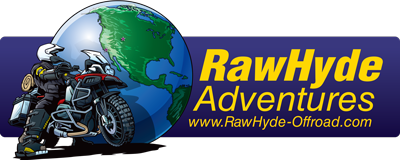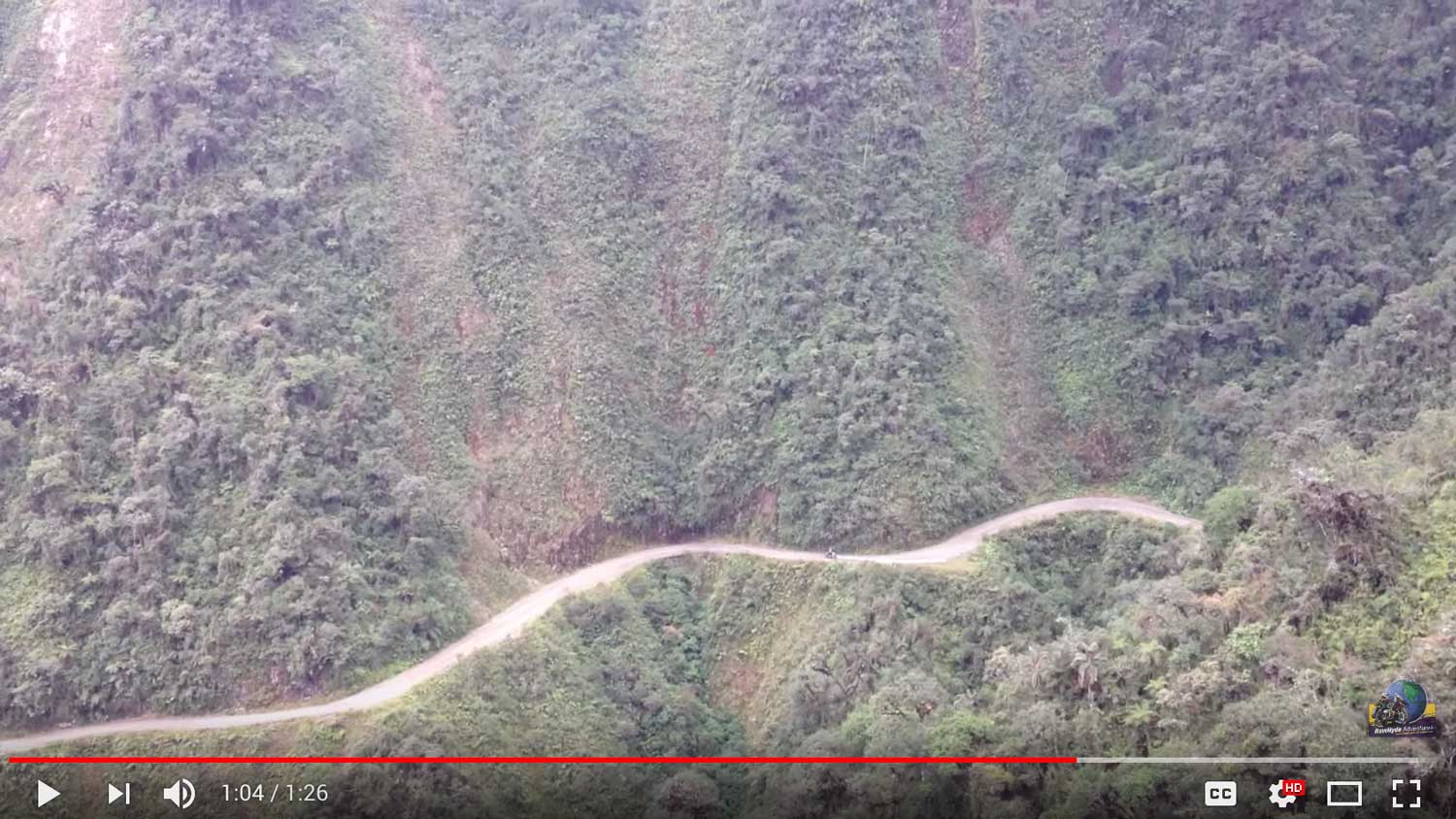The Best of Argentina, Bolivia and Chile
The Best of Argentina, Bolivia and Chile is a 2000 mile ride through three remarkably different countries which all share a single incredible geologic feature – The most influential mountain range in the world; - The Mighty Andes!
The Andes create two of the most extreme climates on earth. The Amazon River basin and jungle on the east side - and the Atacama Desert to the west. The Amazon is the largest river on earth… and the Atacama is the driest desert on earth… all created by this remarkable Mountain chain...
We have an amazing itinerary for you to enjoy as you travel from the jungles near Salta, Argentina to the highest dirt road mountain pass on the continent (over 16,500 feet) and into the the Atacama Desert which is the driest place on the planet. You’ll have the chance to ride the infamous “Death Road” of Bolivia and the mind bending Uyuni Salt Flats! We’ll spend a night in a Hotel made of salt, drink a coffee made of beans from the highest coffee plantation on earth and also ride the “mother road” of Argentina aka Ruta 40. All in all its an amazing trip that embodies the very essence of “Adventure Riding” – below is the itinerary for our “Best of Argentina, Bolivia and Chile” adventure.
Price:
$11,500
Plus a $600 drop-off and pick-up fee per motorcycle.
Dates:
RawHyde The Best of Argentina, Bolivia and Chile schedule:
Arrival Day
Fly into Calama, Chile and transfer to our hotel in a truly adventure focused town called San Pedro de Atacama. (if you can imagine Moab, Utah combined with Sedona, Arizona) Its an incredible place to start an adventure.
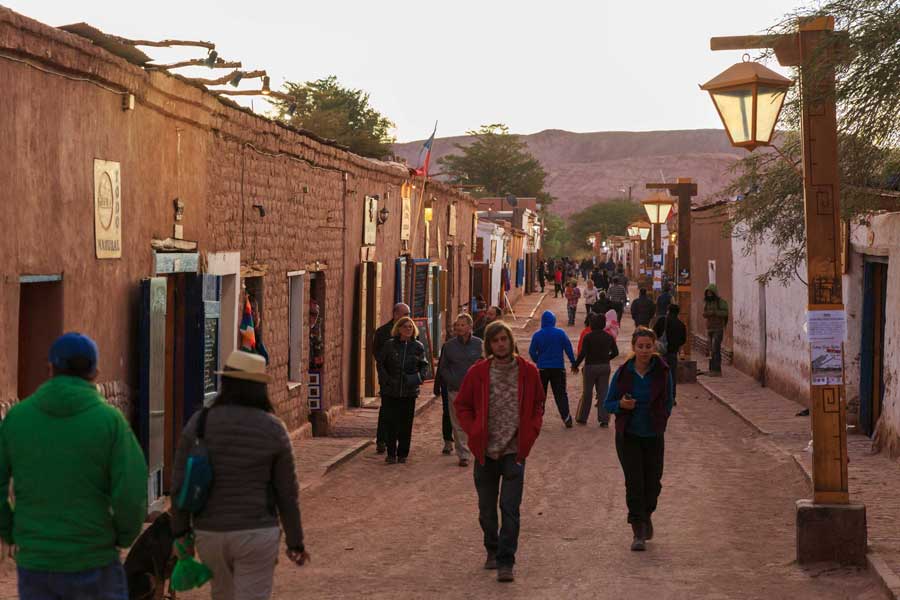
San Pedro de Atacama to Purmamarca
Our adventure begins as we leave San Pedro heading for Purmaraca over the “northern most” border crossing between Argentina and Chile. You’ll cross over Paso Jama into Argentina at an elevation of roughly 14,000 feet to spend the nite in the World Heritage site of Purmamarca. The village is in the Jujuy province of northwest Argentina. It's set at the base of a striking, multi-hued mountain called the Seven Colors Hill. From the village, the Paseo de los Colorados trail leads into the surrounding desert landscapes for views of the mountain. Adobe houses line the streets, and 9 de Julio Square hosts a popular crafts market. Nearby is the centuries-old Santa Rosa de Lima church.
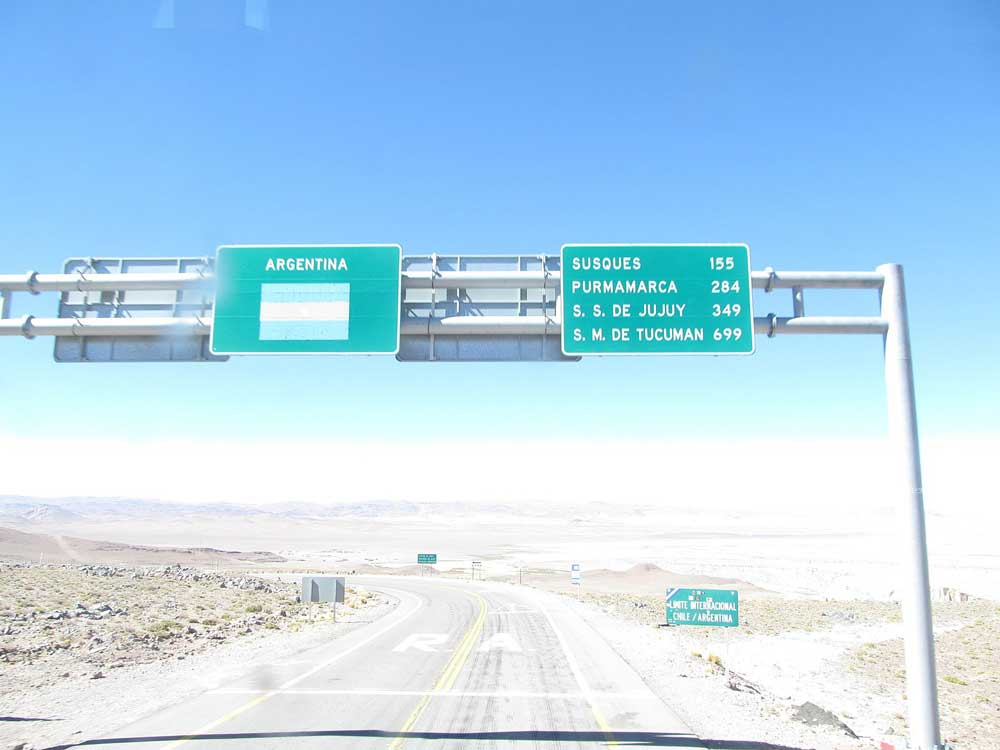
Purmamarca to Cafayate
Northwest Argentina is renowned for its extraordinary landscapes and unique Torrontes wine. We begin our trip with a ride down Ruta del Vino (The Wine Route) this is our “warm up day.” An up-and-coming wine region, it is also known for crazy cool rock formations This will mostly be an asphalt day with a few sections of dirt that have in the past been used as part of the famous Dakar Rally endurance race. Marvel at the colorful cliffs and unusual rock formations of the Valles Calchaquíes and Quebrada de las Conchas.
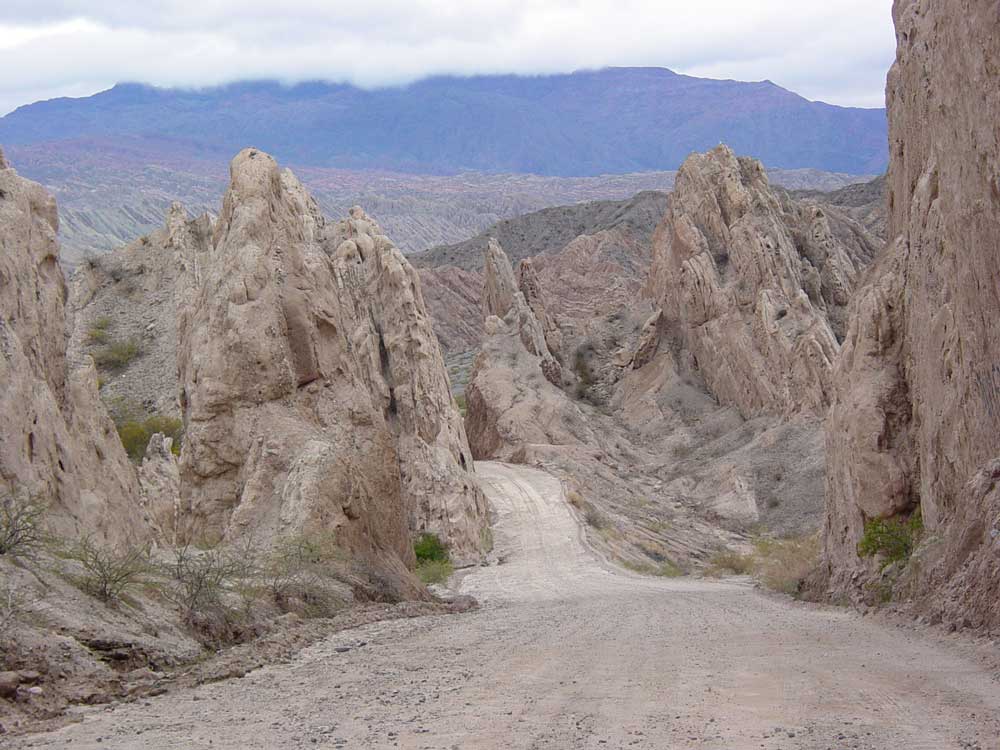
Cafayate to Cachi
Today’s not a long ride, but its classic back country Argentina and our route today takes us on the “Mother Road” of Argentina called Ruta 40 and it stretches from the Bolivian border to the Southernmost tip of the country… some of its paved… some of its not... This video gives you a glimpse of what the ride today will be...
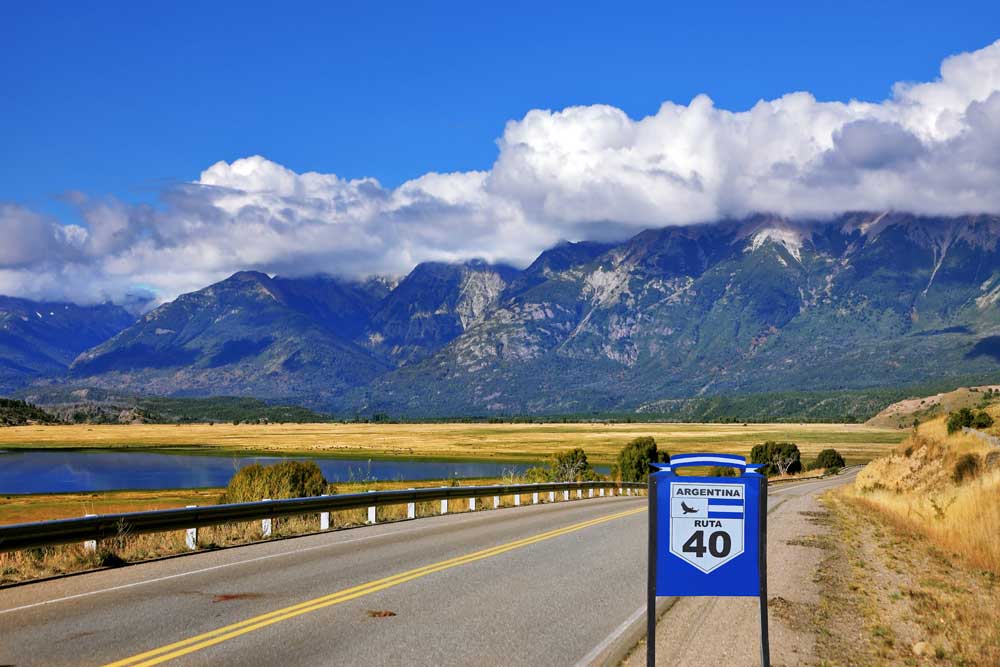
Cachi to Salta
Explore SPDA as we call it. It is a crazy cool town. There has never been a city that has had a more adventurous vibe. Here is a clickable link to show you a ton of pictures from the town. Awesome hotels, great food, a bunch of local things to do... but it’s the “vibe” that makes it memorable. No paved roads in the city… all dirt! The town and commune are in El Loa Province in the Antofagasta Region. It is located east of Antofagasta, some 106 km (60 mi) southeast of Calama and the Chuquicamata copper mine, overlooking the Licancabur volcano. It features a significant archaeological museum, the R. P. Gustavo Le Paige Archaeological Museum, with a large collection of relics and artifacts from the region. Native ruins nearby now attract increasing numbers of tourists interested in learning about pre-Columbian cultures.
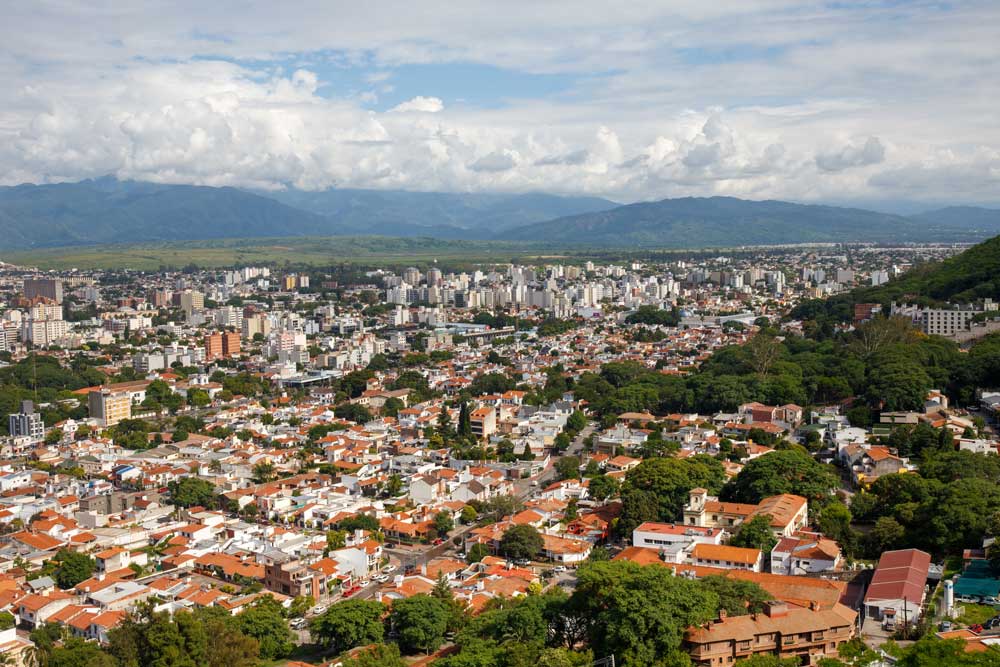
Salta to Calilegua
Today is a fairly short day of riding, but we’ll be riding into the heart of the driest desert in the world, the Atacama. Calama is a lovely town on the Loa River in the Antofagasta region in northern Chile. Set in a mining area, it’s known as a gateway to the Atacama Desert. Just north, Chuquicamata is the world’s largest copper mine, a vast open-pit mine. Some may say it is drab and gritty, but it happens to be the pride and joy of northern Chile. Calama is an economic powerhouse that pumps truckloads of copper money into the Chilean economy every year. There is a visceral appeal to this mining town that definitely goes that extra mile in “keeping it real.”
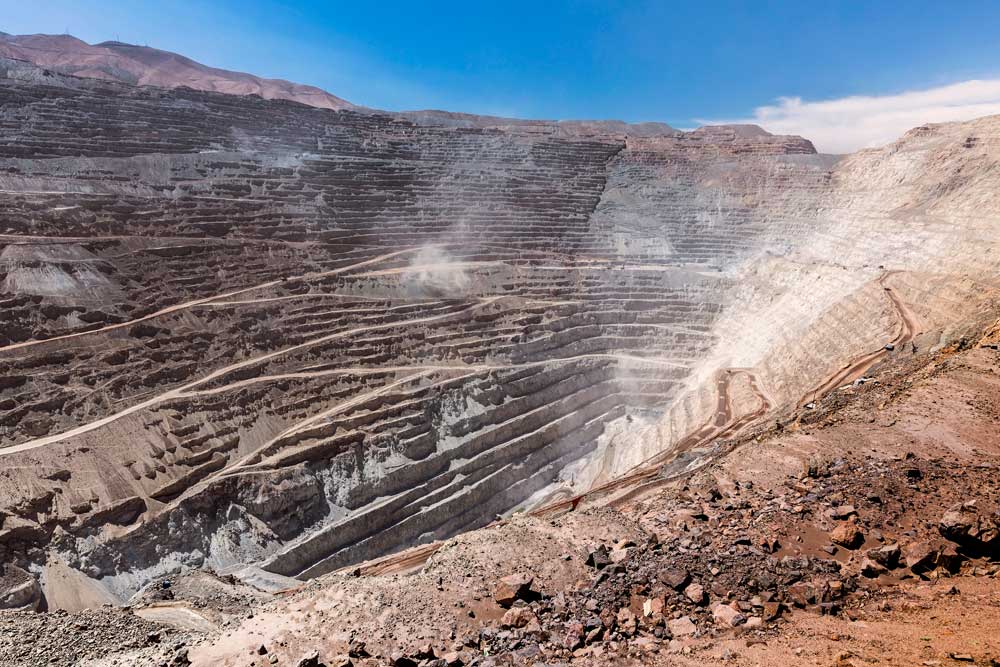
Calilegua to Huacalera
Our trip to Calama serves as the launching point to get us into Bolivia and the mind-bending Uyuni Salt Flats. Uyuni is the flattest place in the world and because of its altitude it’s frequently used to calibrate the sensors of satellites in orbit. Uyuni occupies a desolate corner of southwestern Bolivia, standing in defiance of the desert-like landscape that surrounds it. Mention Uyuni to a Bolivian and they will whistle and emphasize “harto frío” (extreme cold). Yet despite the icy conditions, the town has a cheerful buzz about it.
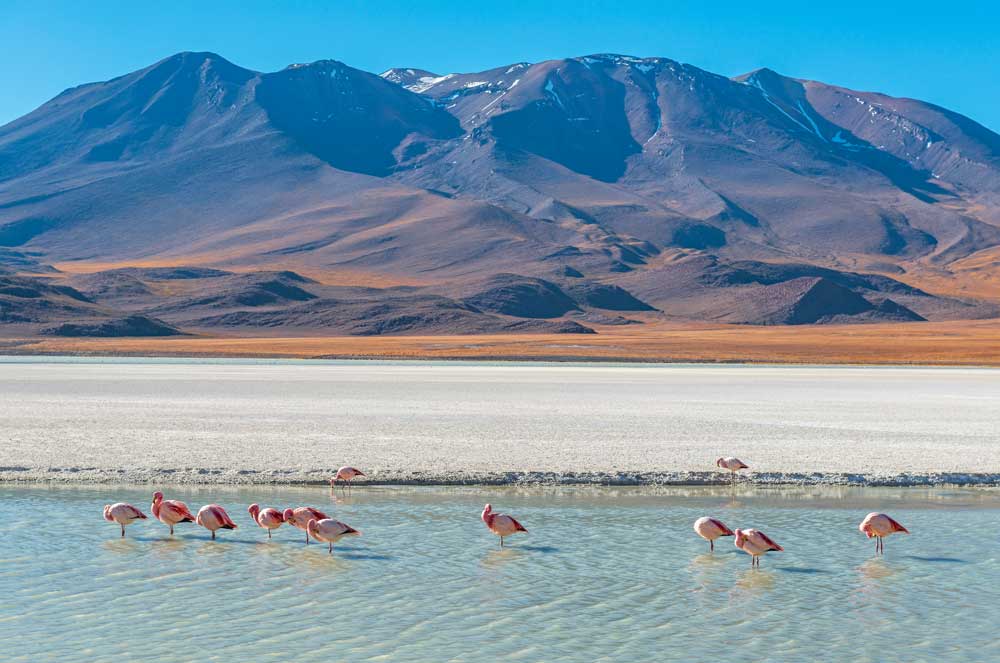
Huacalera to Potosi
Today we cross the border into the poorest yet most adventurous country in all of South America. Hola Bolivia !! Our destination for the day is the world heritage designated city of Potosi! Potosi is one of the highest cities in the world at 4050 meters above sea level AND in the late 1500’s it was the richest city in the world due to the hundreds of silver mines in the local mountains.
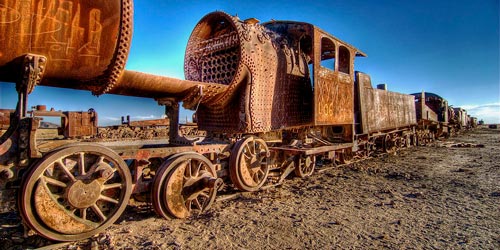
Day off in Potosi
Potosi was founded back in 1546 & there is much history to take in if you want a leisurely day strolling about town – OR you can ride up to the fabled Potosi Mountain (AKA Cerra Rico – Rich mountain in Spanish) and take a look at where all the incredible wealth came from...
Today, Potosi’s silver is long gone but the city is still one of remarkable beauty. Colonial churches and intricately built mansions line the narrow sleepy streets of the city that once seemed to be the center of the universe. UNESCO has recognized the entire city as a World Heritage Site. A visit to Potosi is one of the highlights on any Bolivia itinerary. Once the pearl of the Spanish Crown, the center of legendary riches, its name, in the Spanish lexicon, is synonymous with excessive quantities of wealth, the numbers of which are too high to describe! These days they are mining for zinc, but using techniques that haven’t been updated since colonial times.
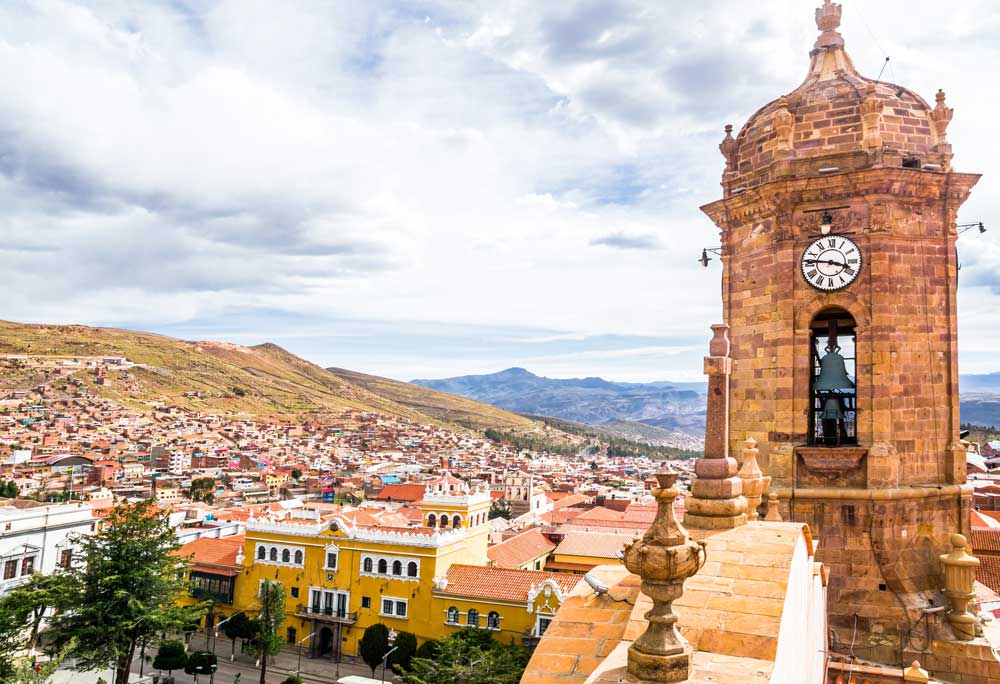
Potosi to La Paz
Today you’ll head for the Bolivian Capital city of La Paz!
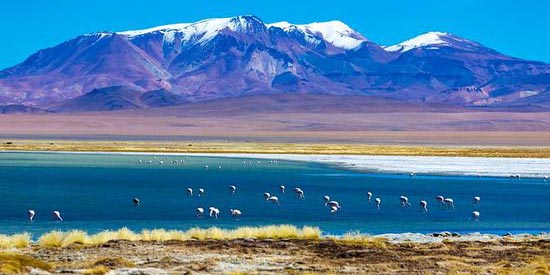
Day off in La Paz to ride The Death Road!
Once the only way into La Paz from the East, the “Death Road” came into the American vocabulary from the TV show “Worlds most dangerous roads” Its an incredible one lane road carved into the side of the dizzingly high mountains east of La Paz. One incredible cool aspect of the ride is that you will ride through actual water falls which cascade down onto the roadway! Its an incredible day and one you will never forget!
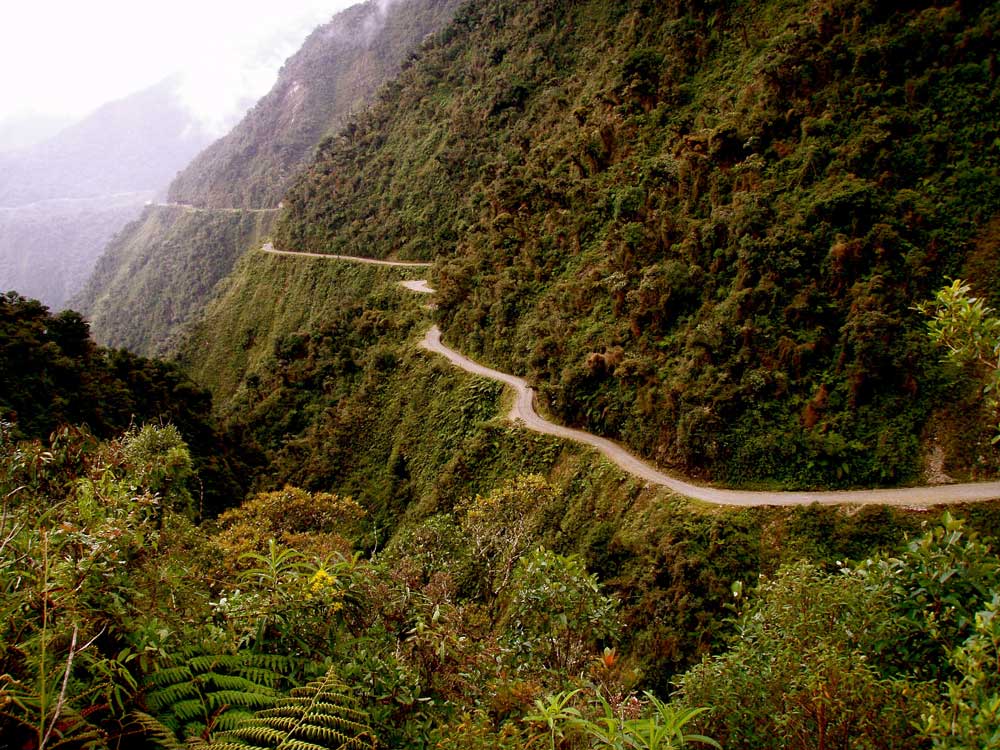
La Paz to Copacabana
Today will be mostly a street ride as we head to the resort town of Copacabana. Copacabana sits on a beautiful bay on the edge of Lake Titicaca.
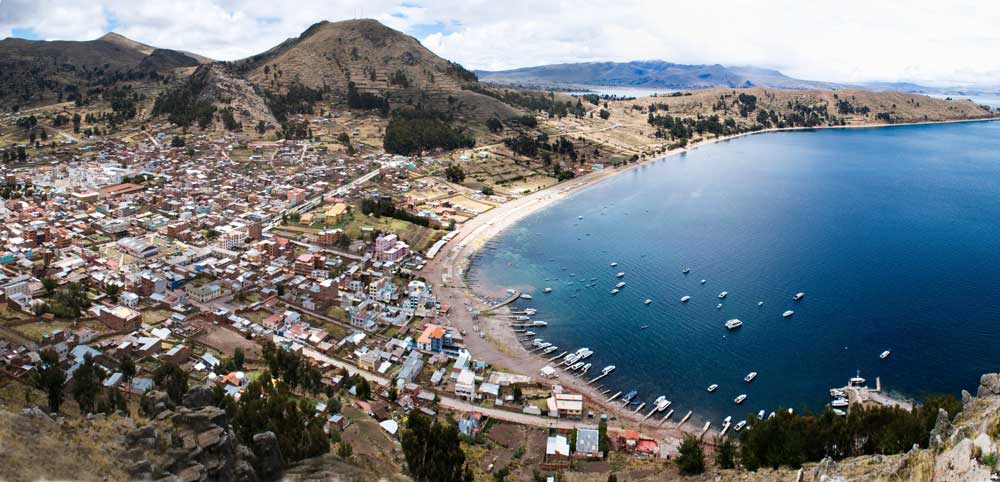
Day off in Copacabana
There is much to see in this region from the pre Inca astronomical observatory at Horca del Inca or perhaps a shoreline tour of the local area on a historic Inca style boat made of reeds.
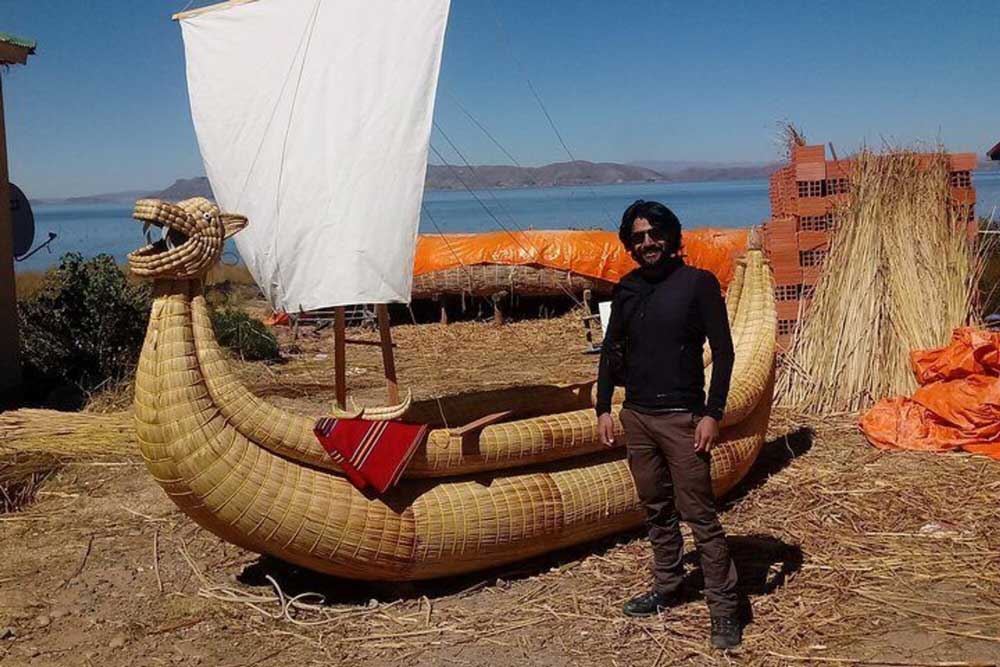
Copacabana to Uyuni
Today is a loong day ( a little over 400 miles) so its mostly paved but the highlight of the day will be arriving at the Uyuni Salt Flats and your hotel which is made entirely out of blocks of salt!
Uyuni is the flattest place in the world and because of its altitude it’s frequently used to calibrate the sensors of satellites in orbit. Uyuni occupies a desolate corner of southwestern Bolivia, standing in defiance of the desert-like landscape that surrounds it. Mention Uyuni to a Bolivian and they will whistle and emphasize “harto frío” (extreme cold). Yet despite the icy conditions, the town has a cheerful buzz about it.
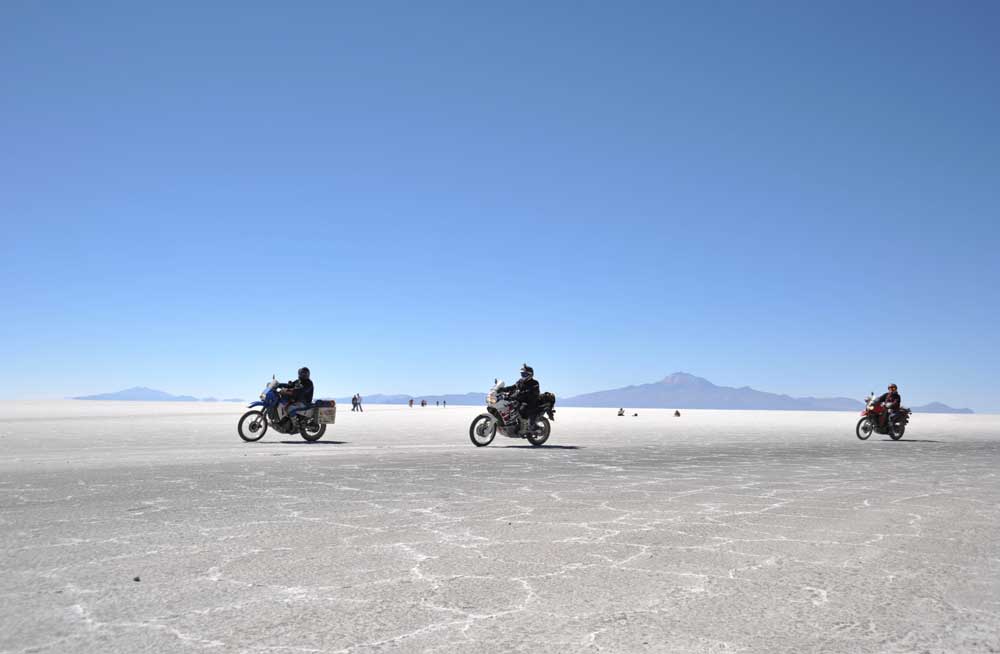
Hanging out on the Solar de Uyuni
Take the day to explore and play on the Solar de Uyuni. Its one of the most remarkable places on earth.
Explore Uyuni and enjoy the salt flats. The Salar de Uyuni is beyond breathtaking and as mentioned above… it’s truly difficult to get one’s mind around. A hundred miles of flatness in any direction... you can ride at top speed for hours.
While you’re on the salt flat there is a fun game you can play which is to try and write your name in cursive on the screen of your GPS? And once you’ve tired of riding the salt flats you can venture just two miles outside the city, and you’ll find an amazing, rusted-out tribute to the Gilded Age. In the late-19th century, then-president Aniceto Arce set out to give Bolivia a state-of-the-art rail system, with Uyuni as its major hub. But Arce’s vision was hampered by indigenous tribes who felt the railroad was an intrusion on their way of life, and the system -- while completed -- was never as grand as he dreamed.
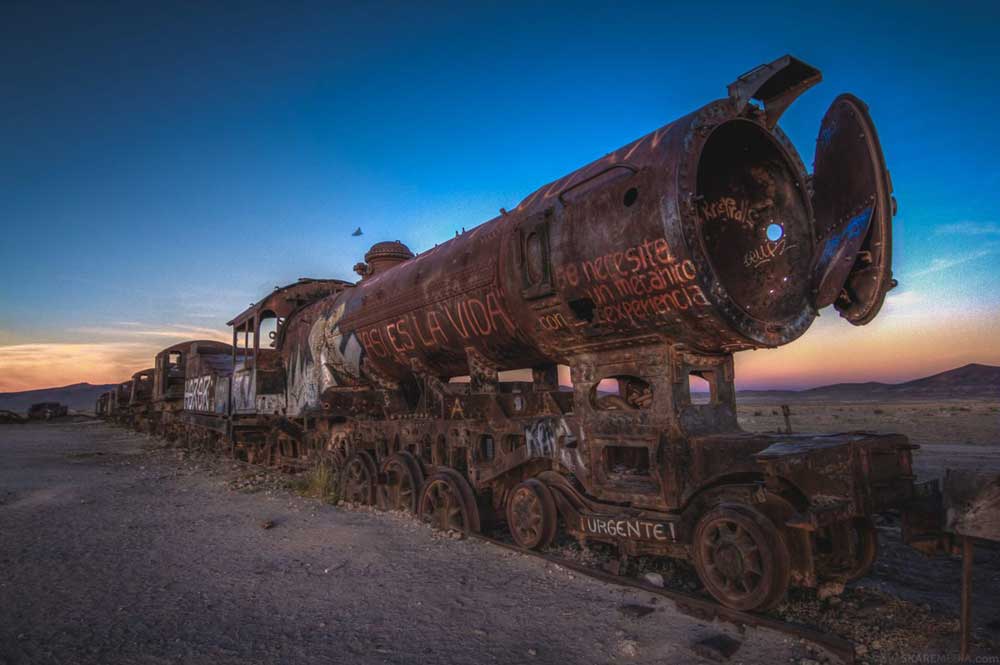
Uyuni to San Pedro de Atacama
Alas all things must end… and today we head back to where it all began. We have a 300 mile pavement day today so we need to get an early start because we have a border crossing to get back into Chile! Tonite we will have a farewell dinner at a great restaurant in San Pedro.
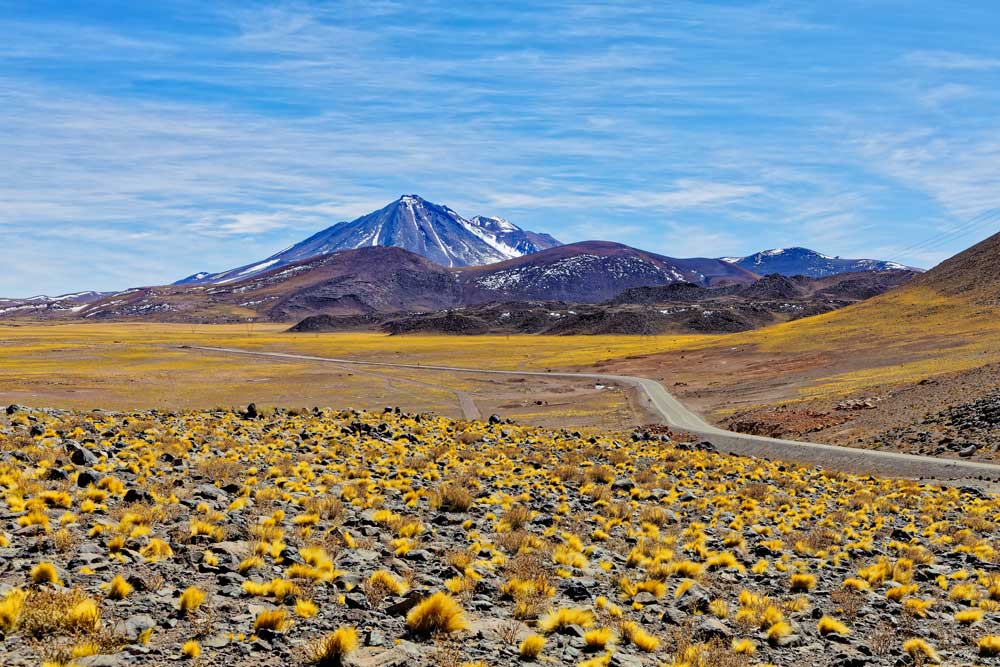
Departure home
Talk to our Rider Advocate
Here at RawHyde Adventures we believe in actually having a conversation with people that are interested in our programs so please call us if you have the time. If you reach our voicemail; please leave a message and we WILL return your call promptly. Please Note: Occasionally we have programs that require the service of our entire staff and take us far beyond cell range, and thus it may be a day or two before we can return your call, but rest assured we will do so as soon as possible.
Even though we'd really rather talk to you in person.. email is sometimes necessary so - email if you must but call us if you can, we'll be delighted to answer your questions. If you do not receive a response to your email within 2 business days; please call. If we are out of the office (as stated above) we will contact you as soon as possible.
Thank you.
